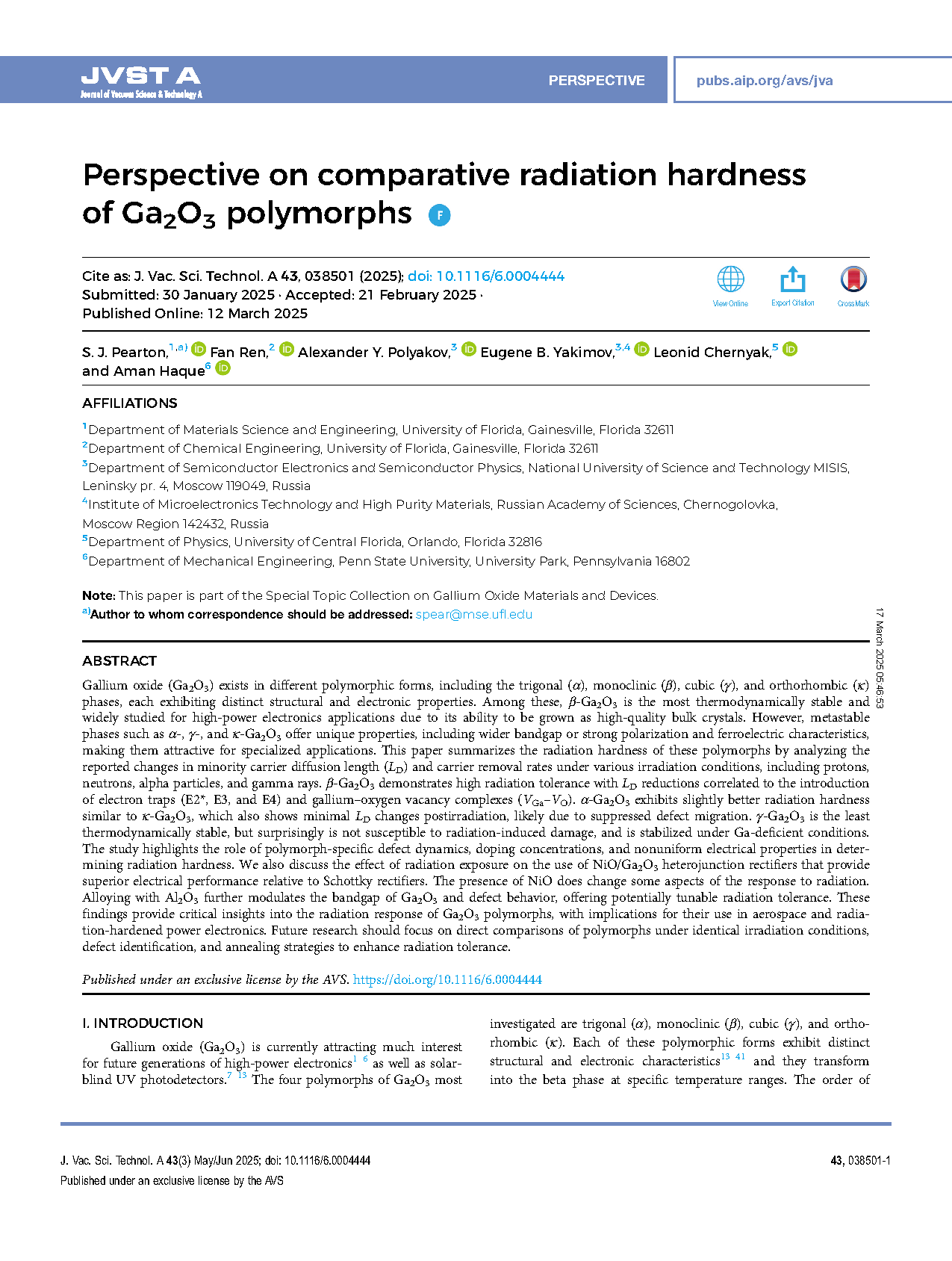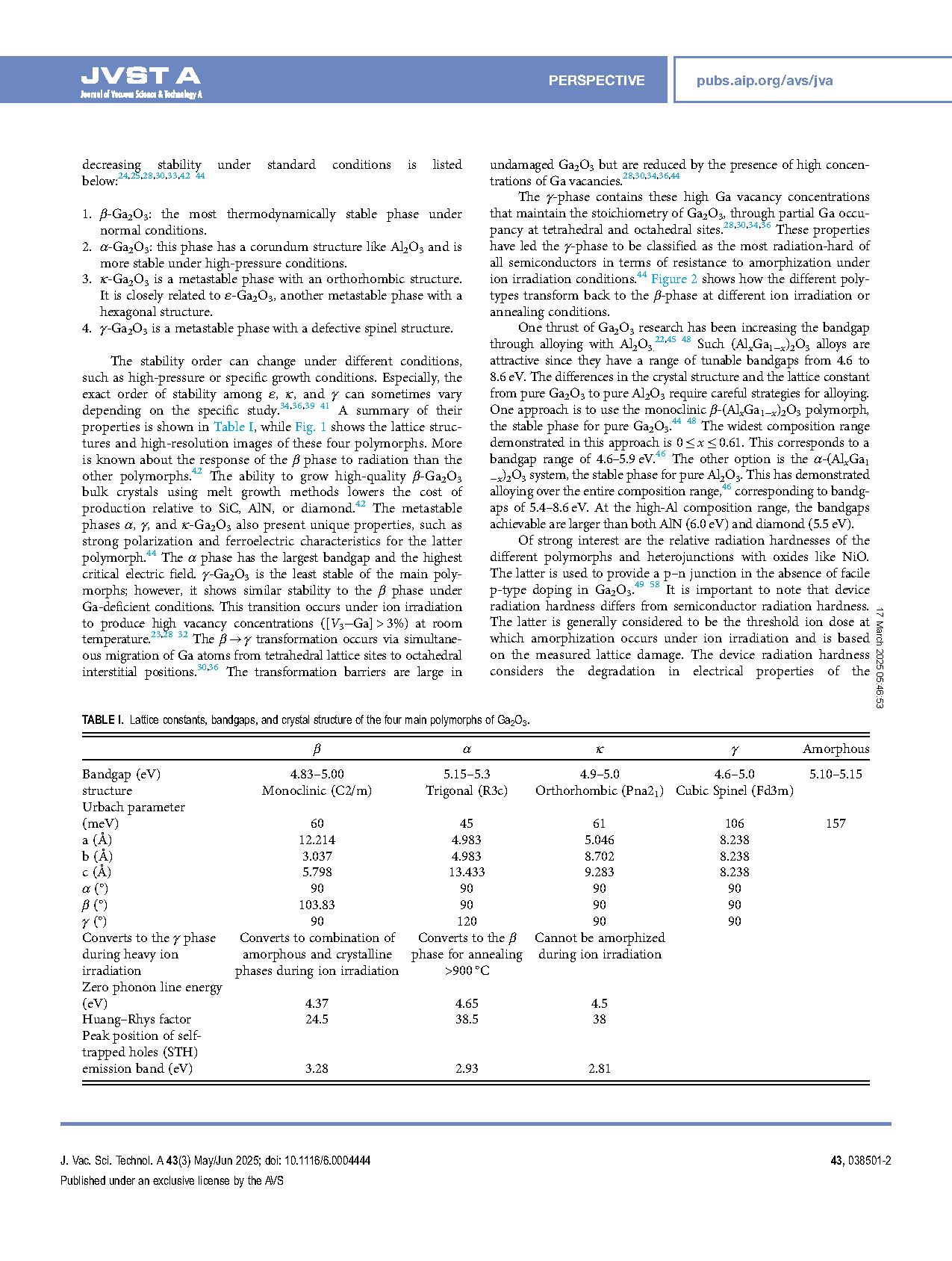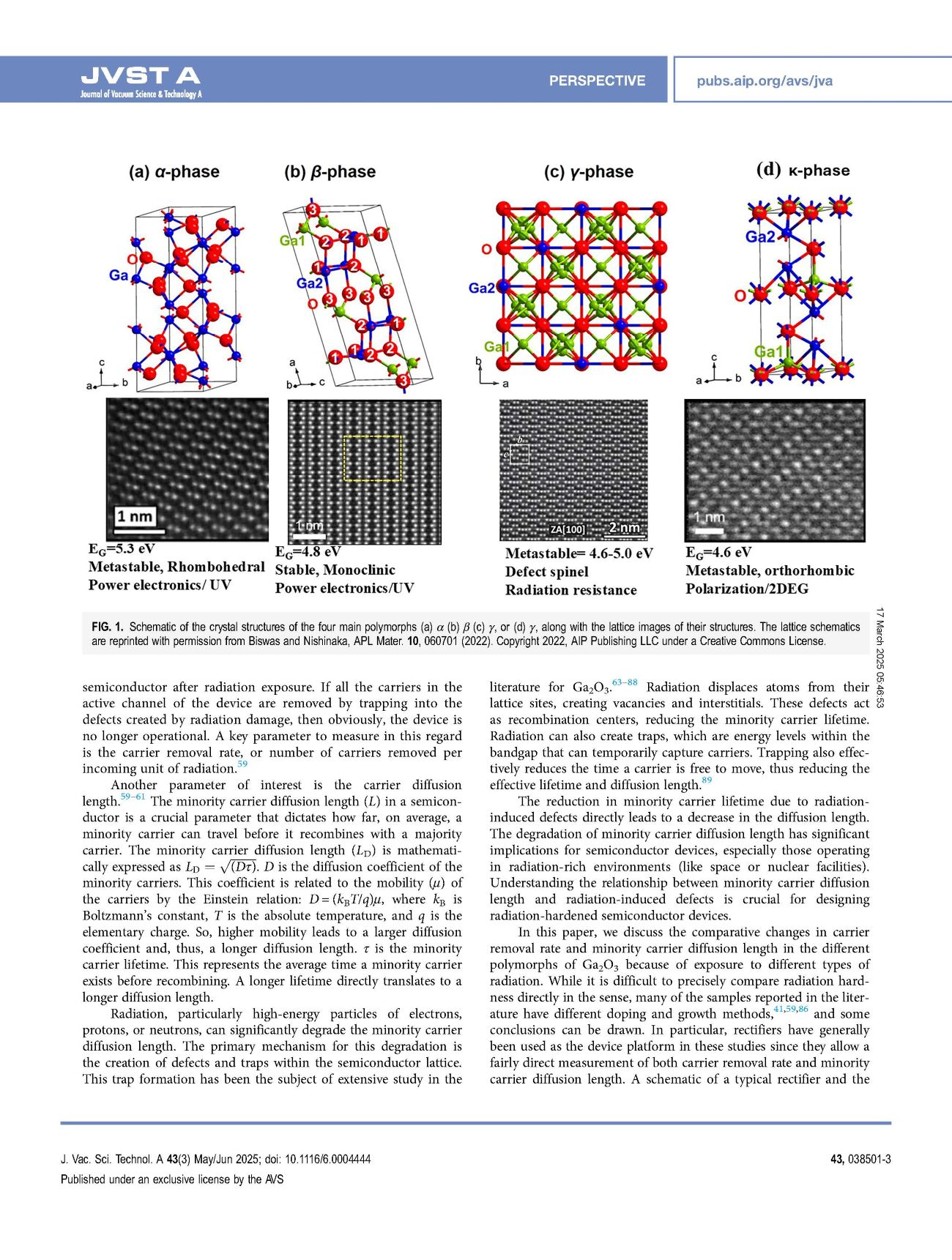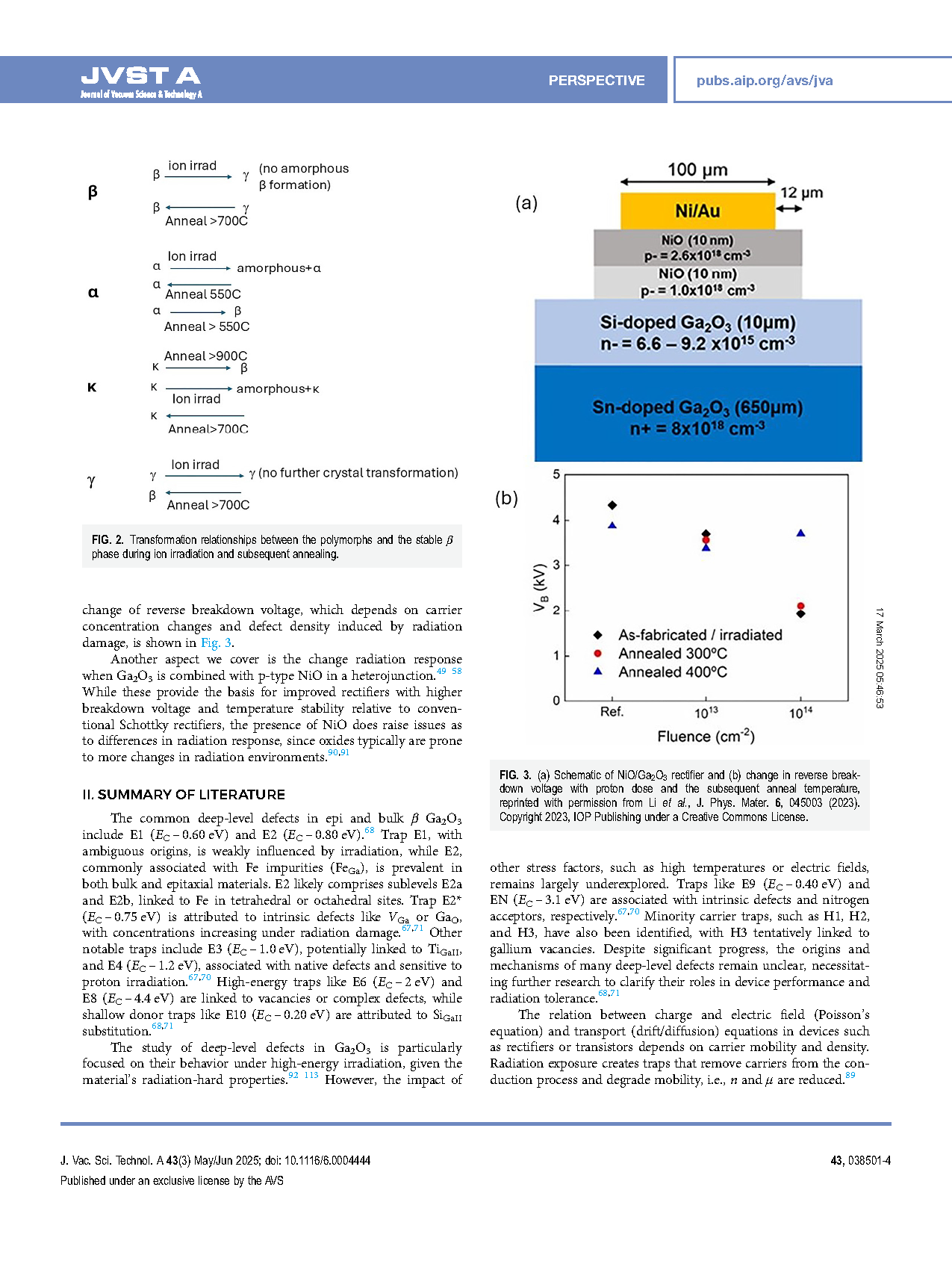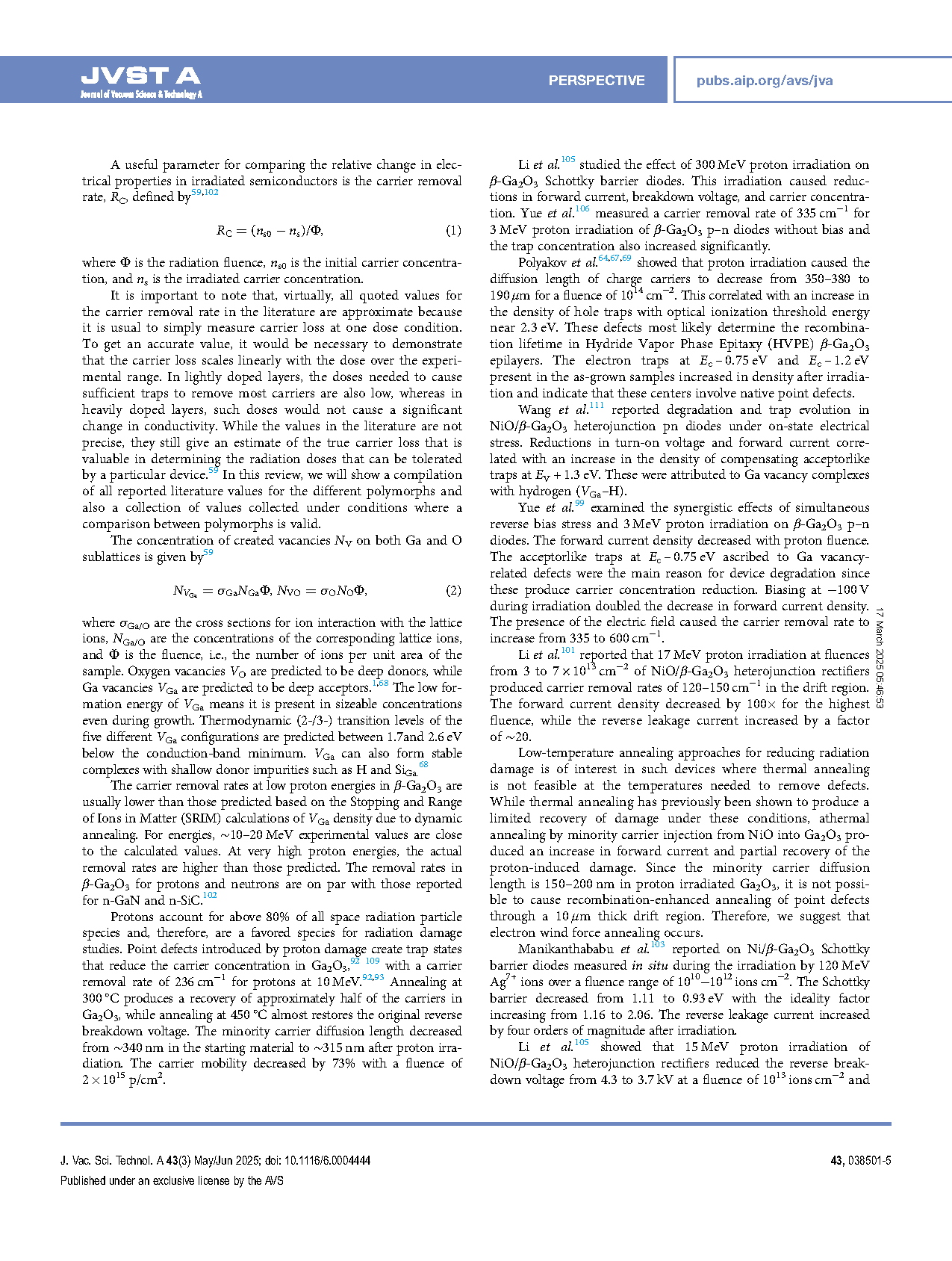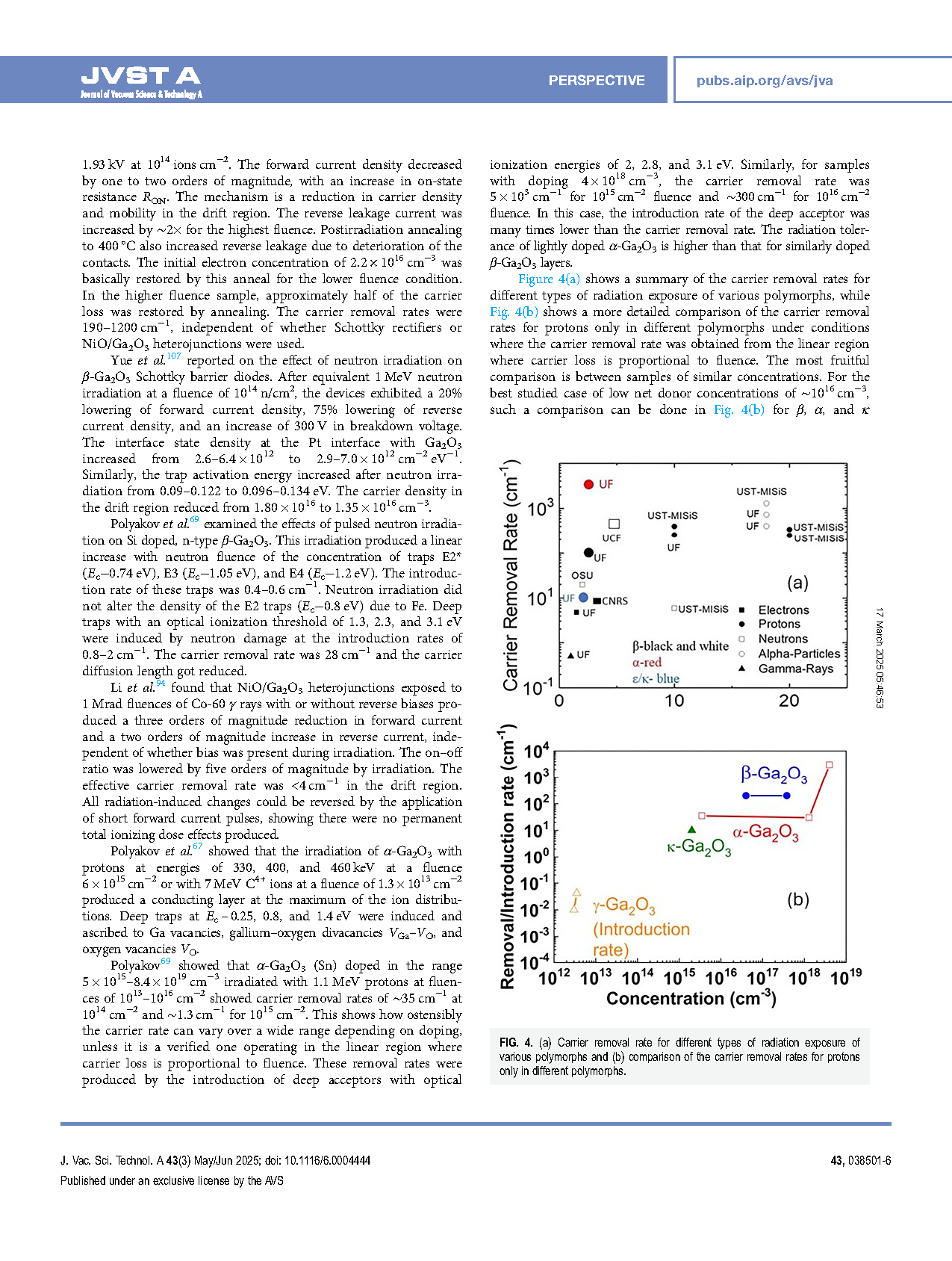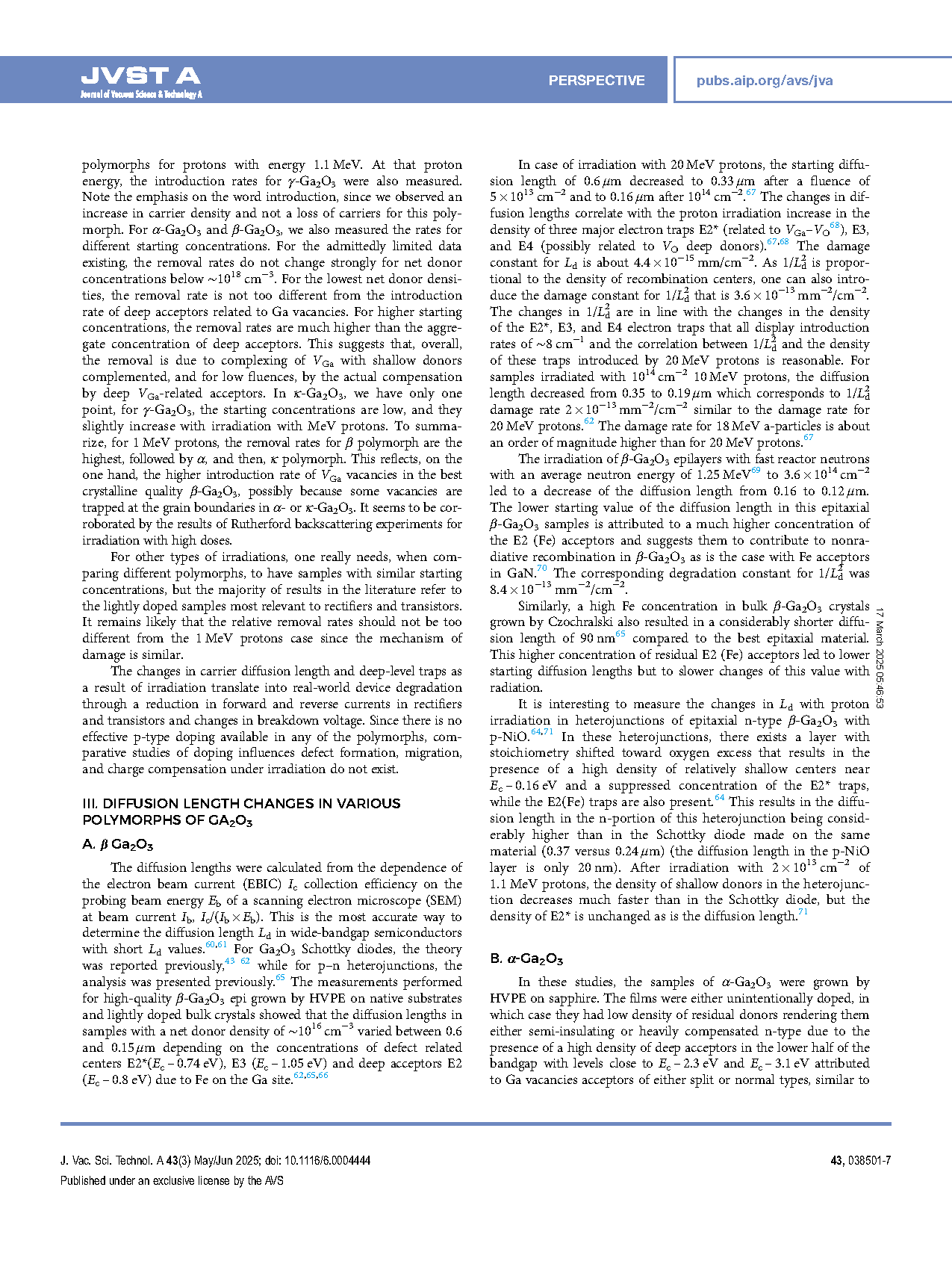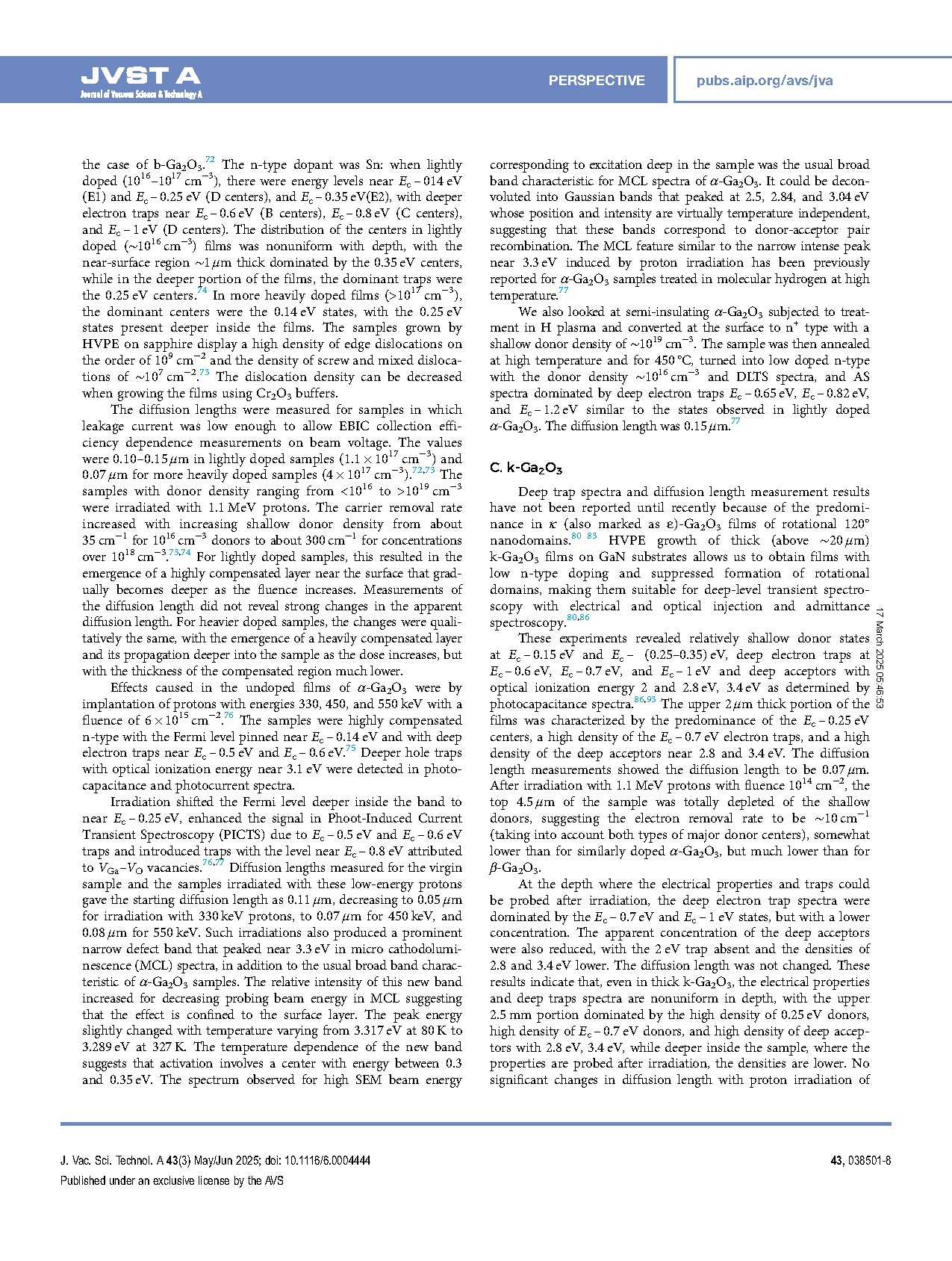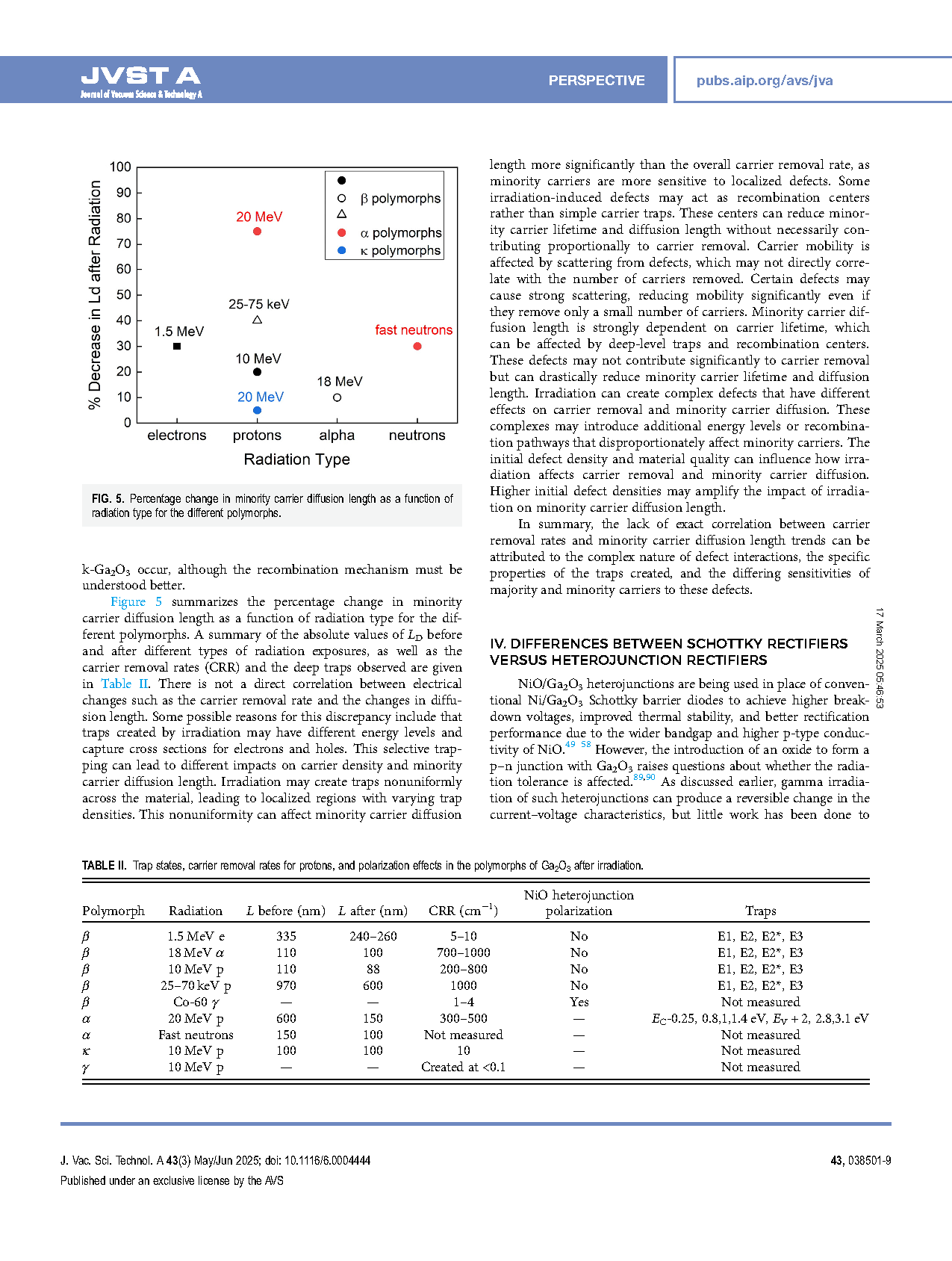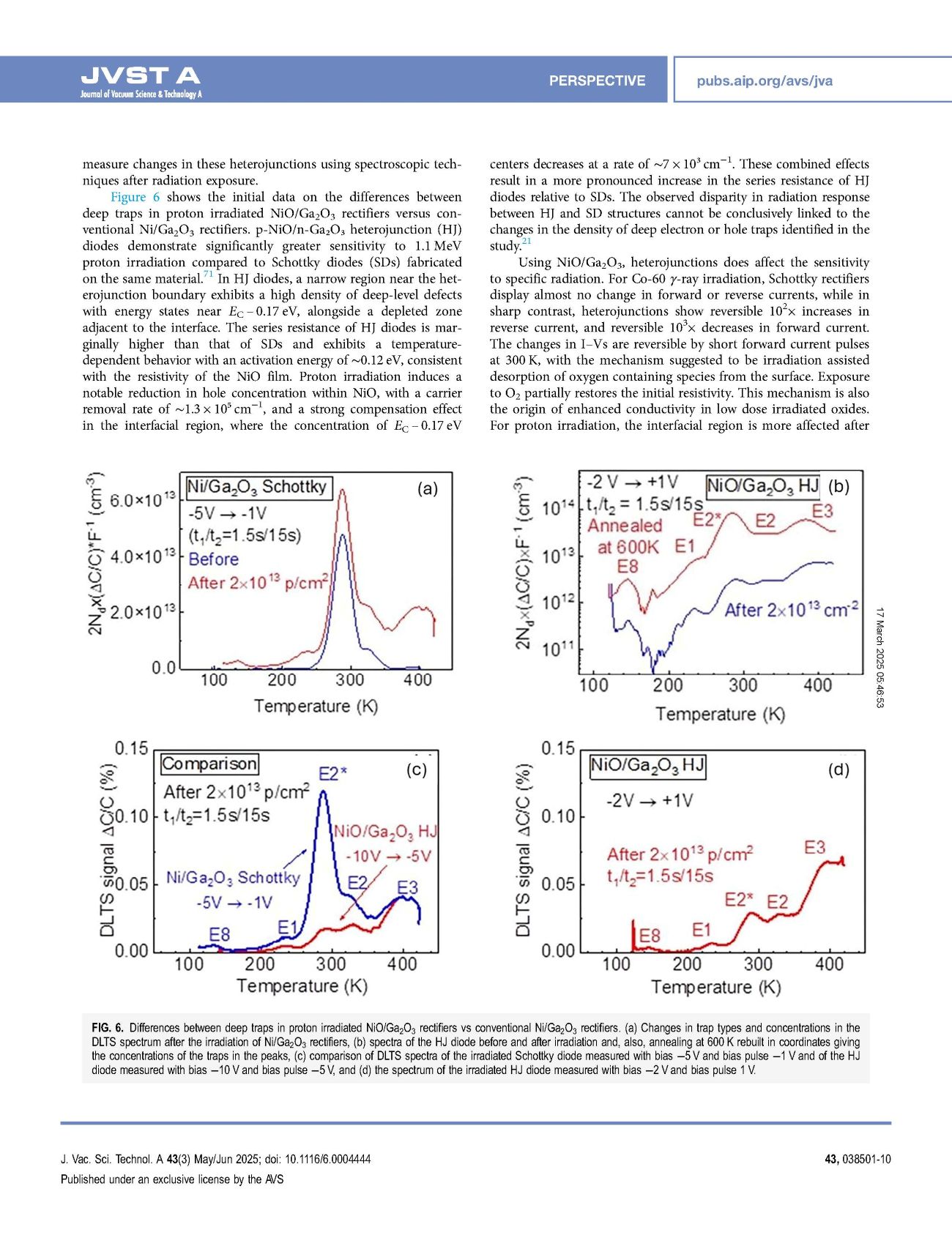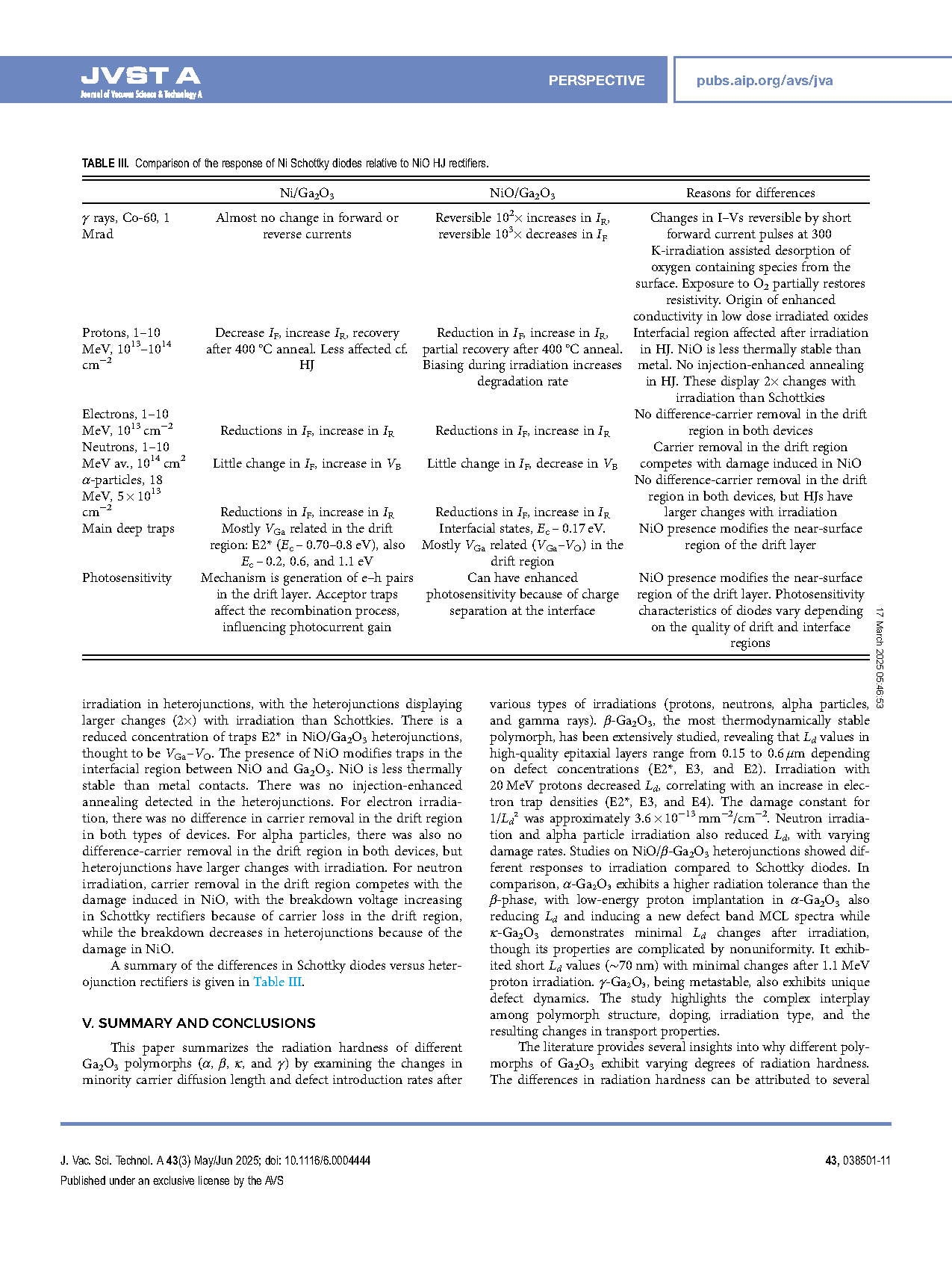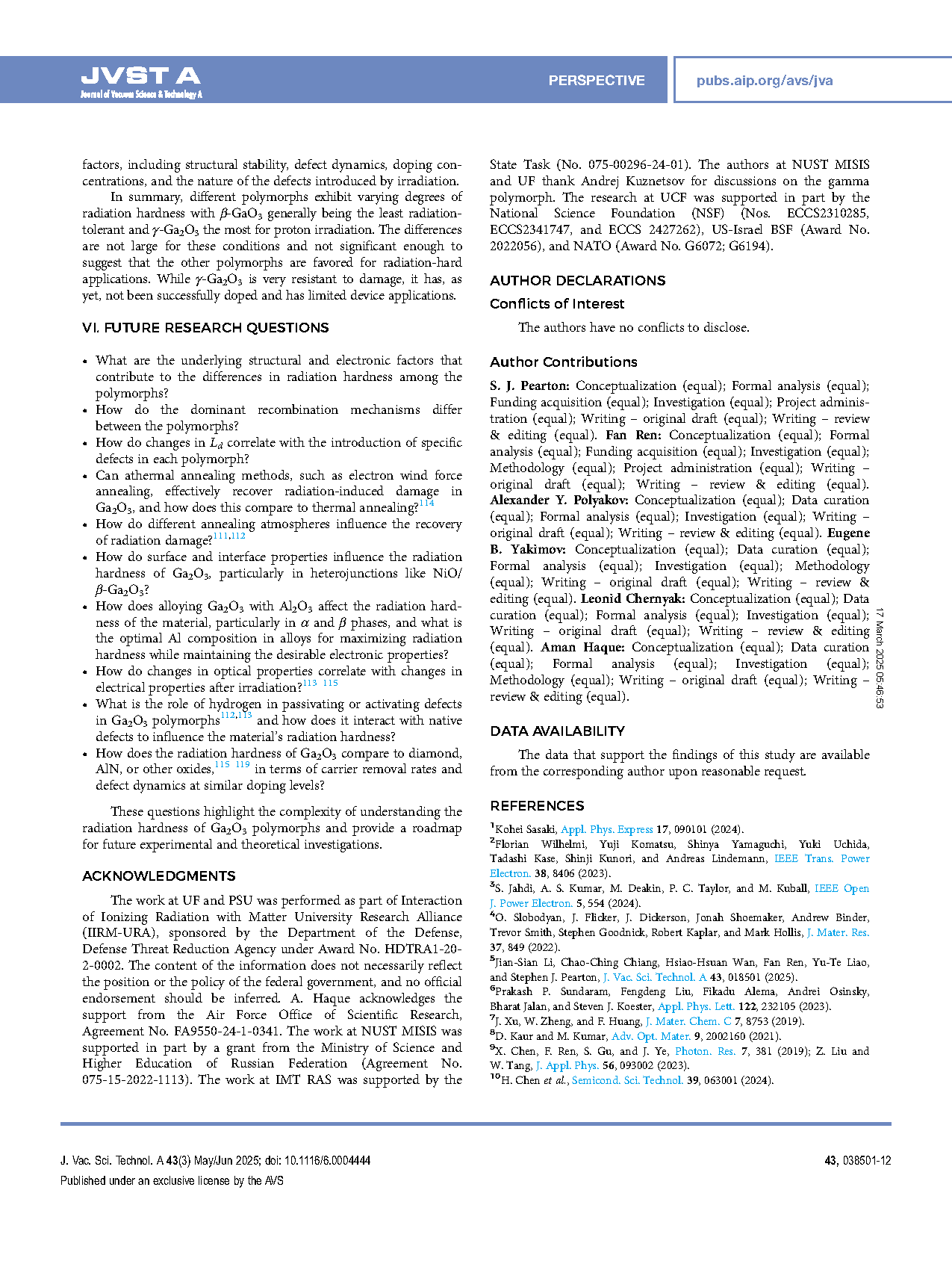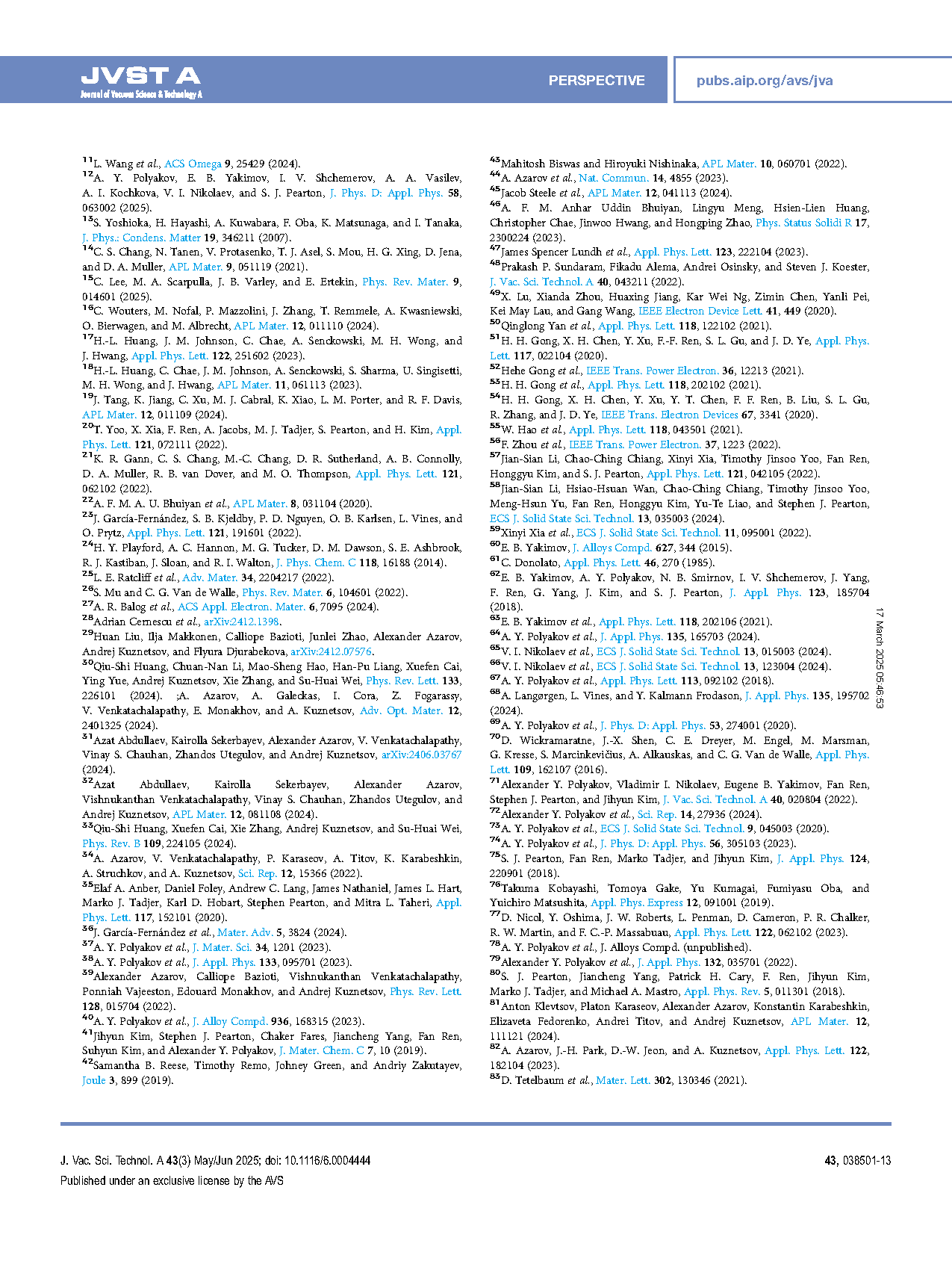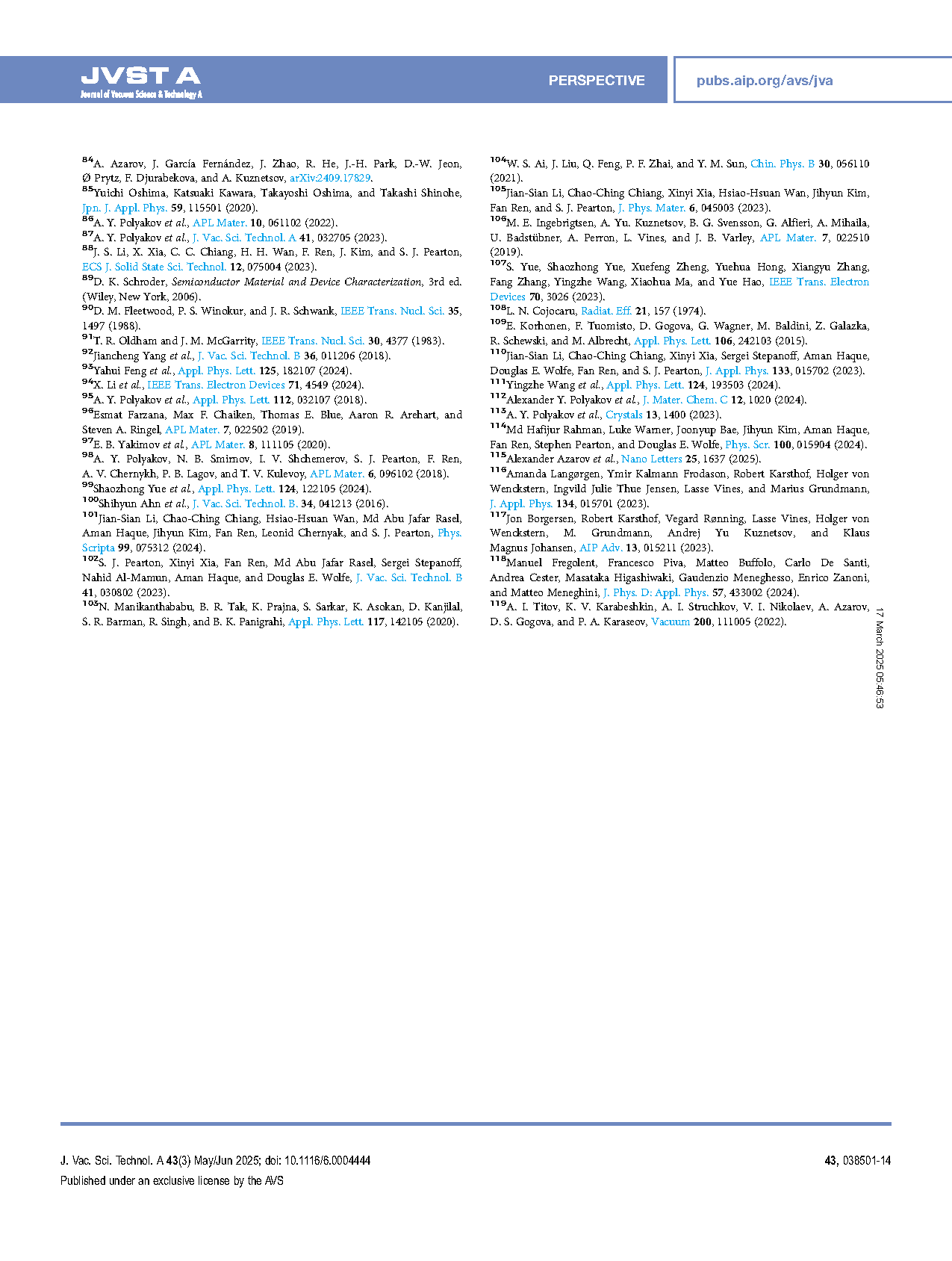

【International Papers】 University of Florida 丨 Perspective on comparative radiation hardness of Ga₂O₃ polymorphs
日期:2025-03-28阅读:492
Researchers from the University of Florida have published a dissertation titled "Perspective on comparative radiation hardness of Ga2O3 polymorphs" in Journal of Vacuum Science & Technology A.
Project Support
The work at UF and PSU was performed as part of Interaction of Ionizing Radiation with Matter University Research Alliance (IIRM-URA), sponsored by the Department of the Defense, Defense Threat Reduction Agency under Award No. HDTRA1-20-2-0002. A. Haque acknowledges the support from the Air Force Office of Scientific Research, Agreement No. FA9550-24-1-0341. The work at NUST MISIS was supported in part by a grant from the Ministry of Science and Higher Education of Russian Federation (Agreement No. 075-15-2022-1113). The work at IMT RAS was supported by the State Task (No. 075-00296-24-01). The authors at NUST MISIS and UF thank Andrej Kuznetsov for discussions on the gamma polymorph. The research at UCF was supported in part by the National Science Foundation (NSF) (Nos. ECCS2310285, ECCS2341747, and ECCS 2427262), US-Israel BSF (Award No. 2022056), and NATO (Award No. G6072; G6194).
Background
Gallium oxide (Ga2O3) is currently attracting much interest for future generations of high-power electronics as well as solar-blind UV photodetectors. The four polymorphs of Ga2O3 most investigated are trigonal (α), monoclinic (β), cubic (γ), and orthorhombic (κ). Each of these polymorphic forms exhibit distinct structural and electronic characteristics and they transform into the beta phase at specific temperature ranges. In this paper, we discuss the comparative changes in carrier removal rate and minority carrier diffusion length in the different polymorphs of Ga2O3 because of exposure to different types of radiation.
Abstract
Gallium oxide (Ga2O3) exists in different polymorphic forms, including the trigonal (α), monoclinic (β), cubic (γ), and orthorhombic (κ) phases, each exhibiting distinct structural and electronic properties. Among these, β-Ga2O3 is the most thermodynamically stable and widely studied for high-power electronics applications due to its ability to be grown as high-quality bulk crystals. However, metastable phases such as α-, γ-, and κ-Ga2O3 offer unique properties, including wider bandgap or strong polarization and ferroelectric characteristics, making them attractive for specialized applications. This paper summarizes the radiation hardness of these polymorphs by analyzing the reported changes in minority carrier diffusion length (LD) and carrier removal rates under various irradiation conditions, including protons, neutrons, alpha particles, and gamma rays. β-Ga2O3 demonstrates high radiation tolerance with LD reductions correlated to the introduction of electron traps (E2*, E3, and E4) and gallium–oxygen vacancy complexes (VGa–VO). α-Ga2O3 exhibits slightly better radiation hardness similar to κ-Ga2O3, which also shows minimal LD changes postirradiation, likely due to suppressed defect migration. γ-Ga2O3 is the least thermodynamically stable, but surprisingly is not susceptible to radiation-induced damage, and is stabilized under Ga-deficient conditions. The study highlights the role of polymorph-specific defect dynamics, doping concentrations, and nonuniform electrical properties in determining radiation hardness. We also discuss the effect of radiation exposure on the use of NiO/Ga2O3 heterojunction rectifiers that provide superior electrical performance relative to Schottky rectifiers. The presence of NiO does change some aspects of the response to radiation. Alloying with Al2O3 further modulates the bandgap of Ga2O3 and defect behavior, offering potentially tunable radiation tolerance. These findings provide critical insights into the radiation response of Ga2O3 polymorphs, with implications for their use in aerospace and radiation-hardened power electronics. Future research should focus on direct comparisons of polymorphs under identical irradiation conditions, defect identification, and annealing strategies to enhance radiation tolerance.
Conclusion
This paper summarizes the radiation hardness of different Ga2O3 polymorphs (α, β, κ, and γ) by examining the changes in minority carrier diffusion length and defect introduction rates after various types of irradiations (protons, neutrons, alpha particles, and gamma rays). β-Ga2O3, the most thermodynamically stable polymorph, has been extensively studied, revealing that Ld values in high-quality epitaxial layers range from 0.15 to 0.6 μm depending on defect concentrations (E2*, E3, and E2). Irradiation with 20 MeV protons decreased Ld, correlating with an increase in electron trap densities (E2*, E3, and E4). The damage constant for 1/Ld² was approximately 3.6 × 10−13 mm−2/cm−2. Neutron irradiation and alpha particle irradiation also reduced Ld, with varying damage rates. Studies on NiO/β-Ga2O3 heterojunctions showed different responses to irradiation compared to Schottky diodes. In comparison, α-Ga₂O₃ exhibits a higher radiation tolerance than the β-phase, with low-energy proton implantation in α-Ga2O3 also reducing Ld and inducing a new defect band MCL spectra while κ-Ga2O3 demonstrates minimal Ld changes after irradiation, though its properties are complicated by nonuniformity. It exhibited short Ld values (∼70 nm) with minimal changes after 1.1 MeV proton irradiation. γ-Ga₂O₃, being metastable, also exhibits unique defect dynamics. The study highlights the complex interplay among polymorph structure, doping, irradiation type, and the resulting changes in transport properties.
The literature provides several insights into why different polymorphs of Ga2O3 exhibit varying degrees of radiation hardness. The differences in radiation hardness can be attributed to several factors, including structural stability, defect dynamics, doping concentrations, and the nature of the defects introduced by irradiation.
In summary, different polymorphs exhibit varying degrees of radiation hardness with β-GaO3 generally being the least radiation-tolerant and γ-Ga2O3 the most for proton irradiation. The differences are not large for these conditions and not significant enough to suggest that the other polymorphs are favored for radiation-hard applications. While γ-Ga2O3 is very resistant to damage, it has, as yet, not been successfully doped and has limited device applications.
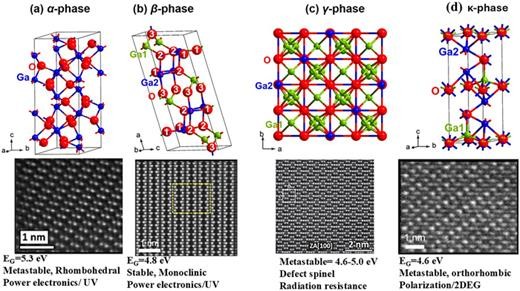
FIG. 1. Schematic of the crystal structures of the four main polymorphs (a) α (b) β (c) γ, or (d) γ, along with the lattice images of their structures.
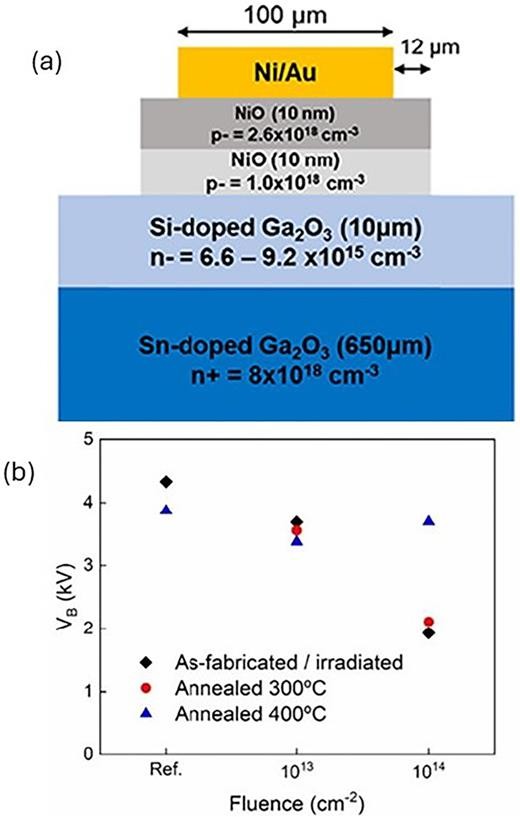
FIG. 2. (a) Schematic of NiO/Ga2O3 rectifier and (b) change in reverse breakdown voltage with proton dose and the subsequent anneal temperature.
DOI:
doi.org/10.1116/6.0004444
